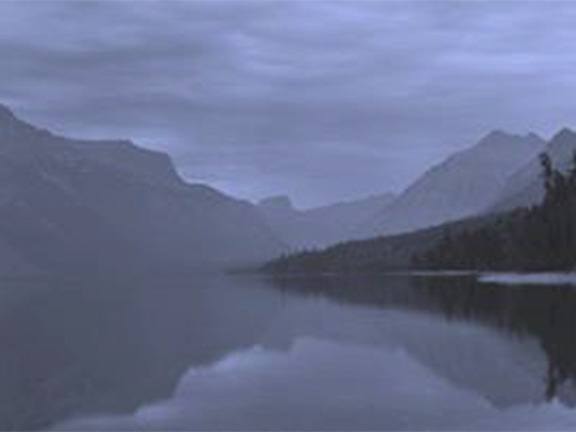A new exhibit will be at the Fernie Museum from Feb. 26 to May 30. The Peace Park Perspective exhibit will feature 24 framed silver-gelatin prints by artist Norman E. Riley. The work explores the Waterton-Glacier International Peace Park.
“As a means of connecting gateway communities to park-inspired art and promoting Glacier National Park’s [GNP] designation as part of the world's first International Peace Park as well as its prestigious artist-in-residence program, finished prints from my residency at GNP will be offered as a permanent gift to the Fernie Museum in Fernie, British Columbia,” said Riley in a press release.
“The Fernie Museum was pleased to accept the generous gift of these prints into its art collection as part of its commitment to artistic excellence, regional place making, and the presentation of Ktunaxa traditions, stories and language,” stated the Fernie Museum in a press release.
The significance of this work is its relation to the park. The Waterton–Glacier International Peace Park is the world’s first International Peace Park, combining Alberta’s 1932 Waterton Lakes National Park and Montana’s Glacier National Park. The border-blurring park is home to many plants and mammal species as well as distinct landscape features that are prairie, forest, alpine and glacial. The art exhibit also commemorates the centennial of the US National Park Service. The Park has an intimate connection with the Elk Valley.
“The Elk Valley borders the Waterton-Glacier International Peace Park and shares the Park’s distinctive climate, physiographic setting, mountain-prairie interface, and tri-ocean hydrographical divide. It is an area of significant scenic values with abundant and diverse flora and fauna. The Elk Valley region and the Parks hold deep significance for First Nations people,” stated the Museum.
The park also has an artist-in-residence program that offers professional artists a four-week stint to explore and creatively capture the natural and cultural resources that the Peace Park provides. It enables artists to share their work on an international scale through educational programs and exhibits.
The artist for the exhibit hails from Bellingham, Wash. Riley was selected as one of four artists across the United States from a broad pool of artistic disciplines to participate in the 2015 Glacier National Park (USA) artist-in-residence program. Riley has donated his work to the Fernie Museum to create a lasting legacy in the program. The photographs in the exhibit are from Riley’s residency at the Park.
Riley’s photography style was made popular by Group f/64, a collective of seven photographers that included well-known photographer Ansel Adams. Photographs are made using an f/64 tradition. The name f/64 is based off of a diaphragm number of photographic lenses. Its number related to the quality of clearness and definition within the photo.
Riley’s work has a permanent exhibit at the San Luis Obispo Museum of Art in San Luis Obispo, CA, U.S, the Museum of Northwest Art in La Conner, Wash., Portland’s Portland Art Museum, and the Department of Special Collections at the University of California in Davis.
For over 30 years his photos have focused on the subject rather than people.
“A common denominator in virtually all of my work since 1984 is the absence of people in the frame, a property that simplifies the photograph as well as the process of making it, thereby focusing attention on the subject rather than the way in which people interact with their surroundings,” said Riley.
